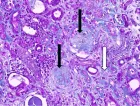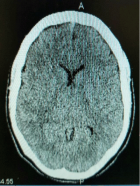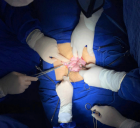Abstract
Research Article
Comparative anatomy of selected bones of forelimb of local Mongrelian Dog (Canis lupus familiaris) in Sokoto, Nigeria
Bello A* and Wamakko HH
Published: 14 December, 2021 | Volume 5 - Issue 1 | Pages: 026-031
This research was conducted over period of 3 months with the aim of studying Age related changes of selected bones of forelimb (Scapula, Humerus, Radius and Ulna) in Local Mongrelian Dog (Canis lupus familiaris). The study entails biometrical and gross observations on the bones. The sample bones were acquired from the experimental animals of comparative anatomy in the department. The bones were categorized into various age groups for the research. The length, width, diameter and circumference of the samples (scapula, humerus, radius and ulna bones) were determined for all the groups. The shape, size, color, location, position and relation of each segment of the samples at various stages of development were determined. The differences across the age groups of different samples were observed and recorded. Based on the research result, it was concluded that, the biometric and morphometry data was found to be increasing with advancement of age. A baseline data was established with the view to enhance learning.
Read Full Article HTML DOI: 10.29328/journal.ivs.1001033 Cite this Article Read Full Article PDF
Keywords:
Age related changes; Mongrelian dog; Scapula; Humerus; Radius and Ulna
References
- Xiaoming W, Mauricio A, Richard T, Dogs: Their Fossil Relatives and Evolutionary History. New York: Columbia University Press. 2008; 1.
- Lindblad-Toh K, Wade CM, Mikkelsen TS, Karlsson EK, Jaffe DB, et al. Genome sequence, comparative analysis & haplotype structure of the domestic dog. Nature. 2005; 438: 803–819.
- Young Julie K, Olson Kirk A, Reading Richard P, Sukh A, Joel B, et al. 2011.
- Fan Z, Silva P, Gronau I, Wang S, Armero AS, et al. Worldwide patterns of genomic variation and admixture in gray wolves. Genome Res. 2016; 26: 163–173. PubMed: https://pubmed.ncbi.nlm.nih.gov/26680994/
- Thalmann O, Shapiro B, Cui P, Schuenemann VJ, Sawyer SK, et al. Complete Mitochondrial Genomes of Ancient Canids Suggest a European Origin of Domestic Dogs. Science. 2013; 342: 871–874. PubMed: https://pubmed.ncbi.nlm.nih.gov/24233726/
- Vila C. Multiple and ancient origins of the domestic dog. Science. 1997; 276: 1687–1689. PubMed: https://pubmed.ncbi.nlm.nih.gov/9180076/
- Freedman AH, Gronau I, Schweizer RM, Del Vecchyo DO, Han E, et al. Genome Sequencing Highlights Genes Under Selection and the Dynamic Early History of Dogs. PLOS Genetics. 2014; 10: e1004016. PubMed: https://pubmed.ncbi.nlm.nih.gov/24453982/
- Vonholdt BM, Driscoll CA. 3-Origins of the dog: Genetic insights into dog domestication. In James Serpell (ed.) 2016.
- Larson G, Bradley DG. Perri Angela. A wolf in dog's clothing: Initial dog domestication and Pleistocene wolf variation. J Archaeological Sci. 2016; 68: 1–4.
- Perri A. A wolf in dog's clothing: Initial dog domestication and Pleistocene wolf variation. J Archaeological Sci. 68: 1–4.
- Dewey T, Bhagat s. Canis lupus familiaris, Animal Diversity Web. 2002.
- Berns GS, Brooks AM, Neuhauss SM, Stephan CF. Functional Magnetic Resonance Imaging in Awake Unrestrained Dogs. PLoS ONE. 2012; 7: e38027. PubMed: https://pubmed.ncbi.nlm.nih.gov/22606363/
- Axelsson E, Ratnakumar A, Arendt ML, Maqbool K, Webster MT, et al. The genomic signature of dog domestication reveals adaptation to a starch-rich diet. Nature. 2013; 495: 360–364. PubMed: https://pubmed.ncbi.nlm.nih.gov/23354050/
- Nikhil S. Why are different breeds of dogs all considered the same species? – Scientific AmericanArchived 10 October 2016 at the Wayback Machine. 2016.
- Freedman AH, Wayne RK. Deciphering the Origin of Dogs: From Fossils to Genomes. Annu Rev Anim Biosci. 2017; 5: 281–307. PubMed: https://pubmed.ncbi.nlm.nih.gov/27912242/
- Larson G, Bradley DG. How Much Is That in Dog Years? The Advent of Canine Population Genomics. PLOS Genetics. 2014; 10: e1004093.
- Dyce KM, Sack WO, Wensing CJG. Textbook of Veterinary Anatomy, 3rd W.B sounders. 2002.
- National Population Commission (NPC), Census Data of 2006.
- Statistical Analysis System (SAS) package version 9.2 software (Statistical Analysis System, 2007, SAS Institute Inc., Cary, NC, USA).
- Siddiqui MSI, Khan MZI, Sarma M, Islam MN, Jahan MR. Macro-anatomy of the bones of the limb of Black Bengal Goat (Capra hircus). Bangladesh J Veterin Med. 2008; 6: 59-66.
- Choudhary OP, Singh I. Morphometrical studies on Scapula of Indian Blackbuck (Antelope cervicapra). Indian Veterin J. 2016; 93: 64-67.
- Choudhary OP, Mathur R, Joshi S, Beniwal G, Dangi A. Gross and biometrical studies on scapula of chital (Axis axis). Veterinary Practitioner. 2013; 14: 036- 039.
- Dalvi RS, Bhamburkar VR, Ladukar ON, Banubakode SB. Morphometric study on scapulae of some domestic and wild animals. Tech. Bul. XII Convention and National Symposium of IAVA. 1997; 43.
- Jangir DK. Thesis entitled “Gross studies on the bones of the Forelimb in Indian Gazelle (Gazella gazelle bennettii)” College of veterinary and animal sciences, RAJUVAS, Bikaner. 78-91.
Figures:
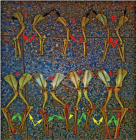
Figure 1
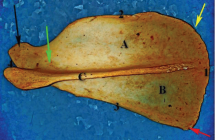
Figure 2
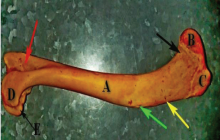
Figure 3
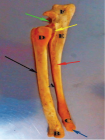
Figure 4
Similar Articles
-
Anatomical changes of the development of red Sokoto goat stomachBello A*,Joseph OA,Onua JE,Onyeanusib BI,Umaru MA,Bodinga HA. Anatomical changes of the development of red Sokoto goat stomach. . 2020 doi: 10.29328/journal.ivs.1001019; 4: 004-009
-
Comparative anatomy of selected bones of forelimb of local Mongrelian Dog (Canis lupus familiaris) in Sokoto, NigeriaBello A*,Wamakko HH. Comparative anatomy of selected bones of forelimb of local Mongrelian Dog (Canis lupus familiaris) in Sokoto, Nigeria. . 2021 doi: 10.29328/journal.ivs.1001033; 5: 026-031
Recently Viewed
-
Immunological background for treatments with biologicals in CRSwNPL Klimek*,J Hagemann,I Casper,T Huppertz,A Bedbrook,J Bousquet. Immunological background for treatments with biologicals in CRSwNP. Arch Asthma Allergy Immunol. 2021: doi: 10.29328/journal.aaai.1001026; 5: 022-029
-
The Bacteriological Profile of Nosocomial Infections at the Army Central Hospital of BrazzavilleMedard Amona*,Yolande Voumbo Matoumona Mavoungou,Hama Nemet Ondzotto,Benjamin Kokolo,Armel Itoua,Gilius Axel Aloumba,Pascal Ibata. The Bacteriological Profile of Nosocomial Infections at the Army Central Hospital of Brazzaville. Int J Clin Microbiol Biochem Technol. 2025: doi: 10.29328/journal.ijcmbt.1001032; 8: 009-022
-
Nasal cytology in patients with previous SARS-CoV-2 infection: occurrence of atypical lymphocytesArturo Armone Caruso*, Anna Miglietta, Giovanni De Rossi, Liliana Nappi, Veronica Viola, Stefano De Rossi, Salvatore Del Prete, Clara Imperatore, Sabato Leo, Daniele Naviglio, Monica Gallo, Daniela Marasco, Lucia Grumetto. Nasal cytology in patients with previous SARS-CoV-2 infection: occurrence of atypical lymphocytes. Adv Treat ENT Disord. 2023: doi: 10.29328/journal.ated.1001014; 7: 001-006
-
Vestibular-limbic relationships: Brain mappingPaolo Gamba*. Vestibular-limbic relationships: Brain mapping. Insights Depress Anxiety. 2018: doi: 10.29328/journal.ida.1001006; 2: 007-013
-
May we feed cancer?Maria Grazia Spurio*. May we feed cancer?. Insights Depress Anxiety. 2018: doi: 10.29328/journal.ida.1001005; 2: 001-006
Most Viewed
-
Impact of Latex Sensitization on Asthma and Rhinitis Progression: A Study at Abidjan-Cocody University Hospital - Côte d’Ivoire (Progression of Asthma and Rhinitis related to Latex Sensitization)Dasse Sery Romuald*, KL Siransy, N Koffi, RO Yeboah, EK Nguessan, HA Adou, VP Goran-Kouacou, AU Assi, JY Seri, S Moussa, D Oura, CL Memel, H Koya, E Atoukoula. Impact of Latex Sensitization on Asthma and Rhinitis Progression: A Study at Abidjan-Cocody University Hospital - Côte d’Ivoire (Progression of Asthma and Rhinitis related to Latex Sensitization). Arch Asthma Allergy Immunol. 2024 doi: 10.29328/journal.aaai.1001035; 8: 007-012
-
Causal Link between Human Blood Metabolites and Asthma: An Investigation Using Mendelian RandomizationYong-Qing Zhu, Xiao-Yan Meng, Jing-Hua Yang*. Causal Link between Human Blood Metabolites and Asthma: An Investigation Using Mendelian Randomization. Arch Asthma Allergy Immunol. 2023 doi: 10.29328/journal.aaai.1001032; 7: 012-022
-
An algorithm to safely manage oral food challenge in an office-based setting for children with multiple food allergiesNathalie Cottel,Aïcha Dieme,Véronique Orcel,Yannick Chantran,Mélisande Bourgoin-Heck,Jocelyne Just. An algorithm to safely manage oral food challenge in an office-based setting for children with multiple food allergies. Arch Asthma Allergy Immunol. 2021 doi: 10.29328/journal.aaai.1001027; 5: 030-037
-
Snow white: an allergic girl?Oreste Vittore Brenna*. Snow white: an allergic girl?. Arch Asthma Allergy Immunol. 2022 doi: 10.29328/journal.aaai.1001029; 6: 001-002
-
Cytokine intoxication as a model of cell apoptosis and predict of schizophrenia - like affective disordersElena Viktorovna Drozdova*. Cytokine intoxication as a model of cell apoptosis and predict of schizophrenia - like affective disorders. Arch Asthma Allergy Immunol. 2021 doi: 10.29328/journal.aaai.1001028; 5: 038-040

If you are already a member of our network and need to keep track of any developments regarding a question you have already submitted, click "take me to my Query."







